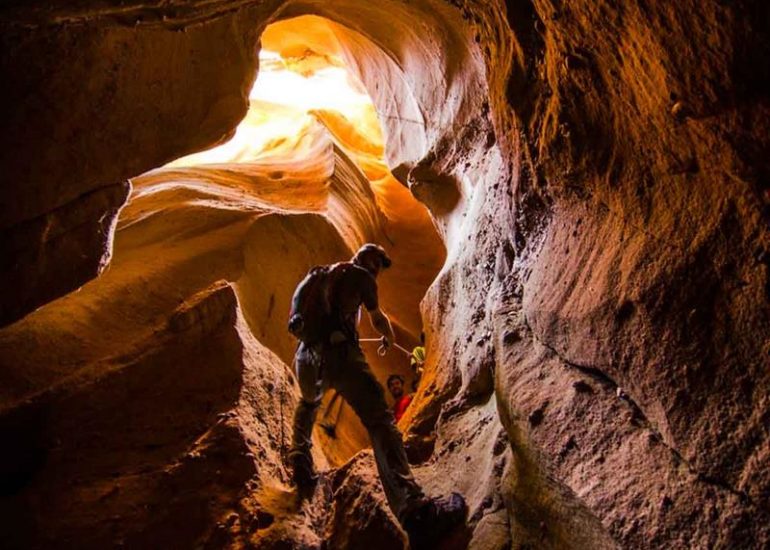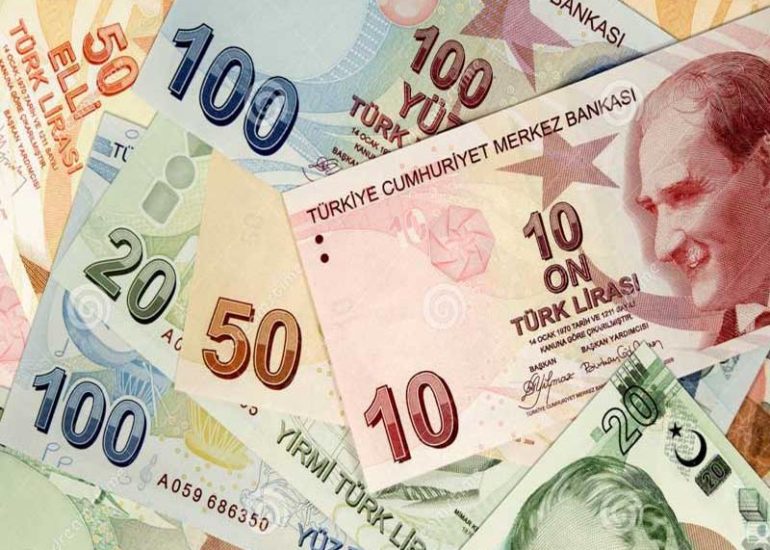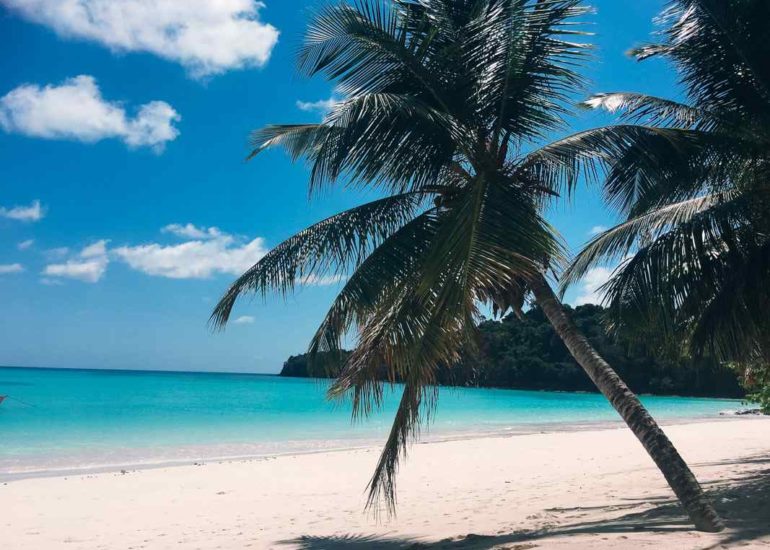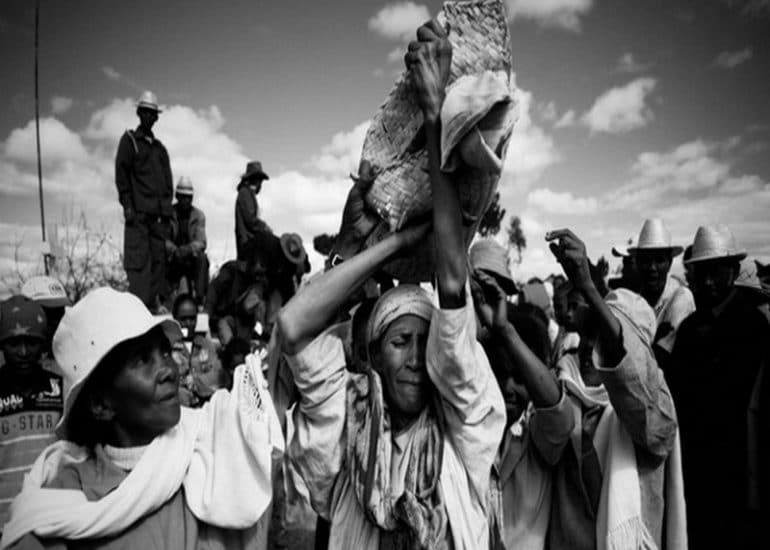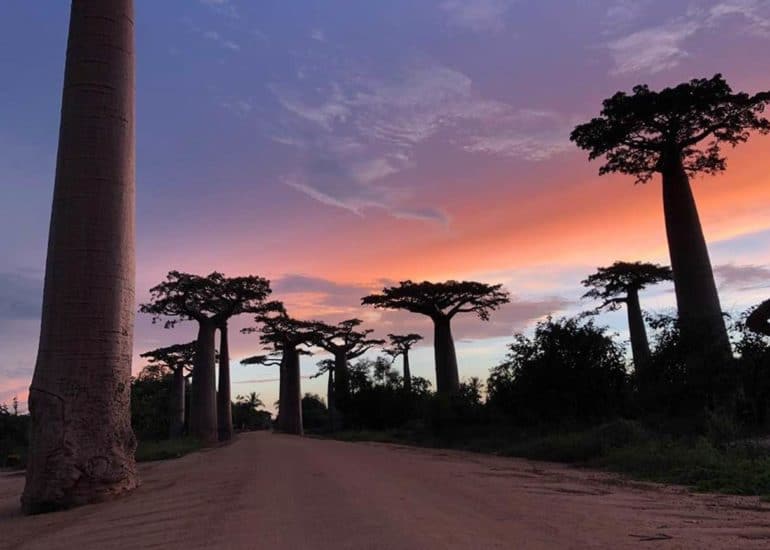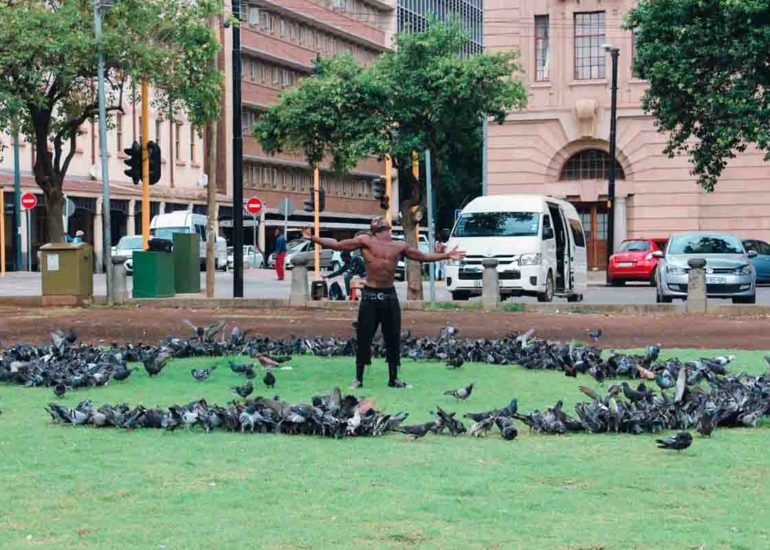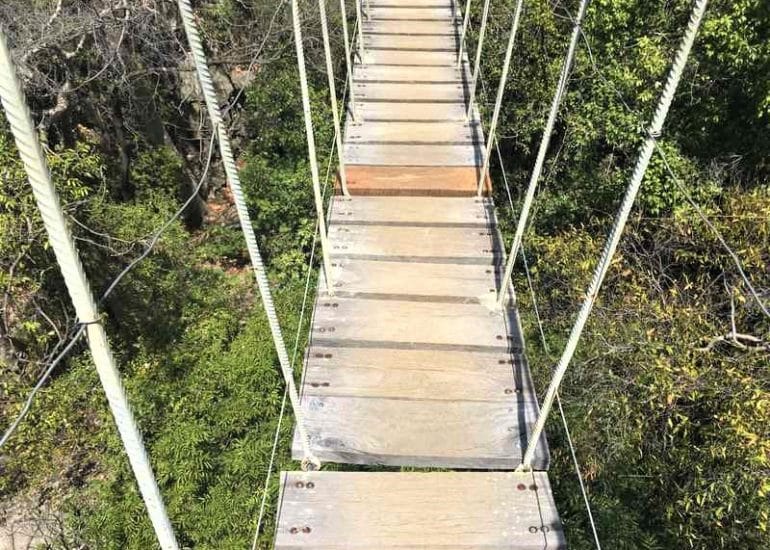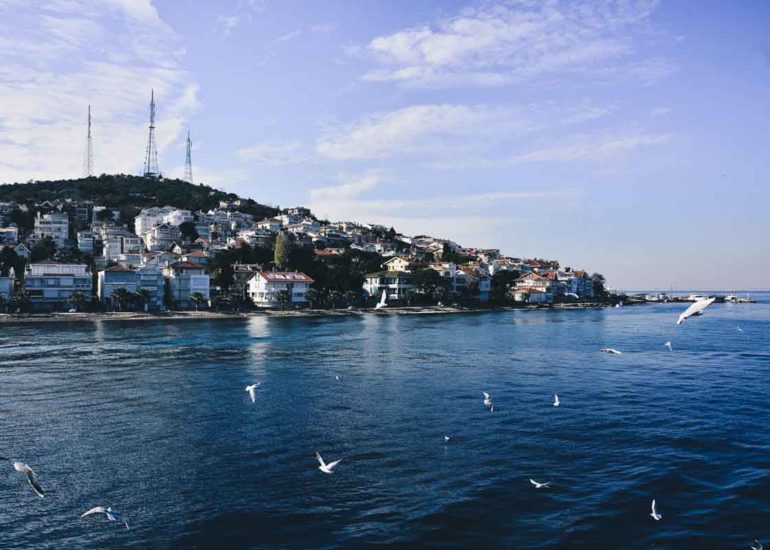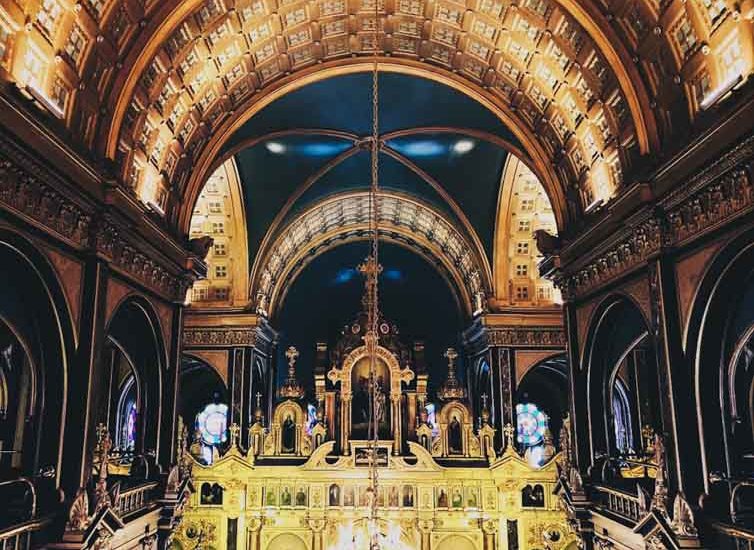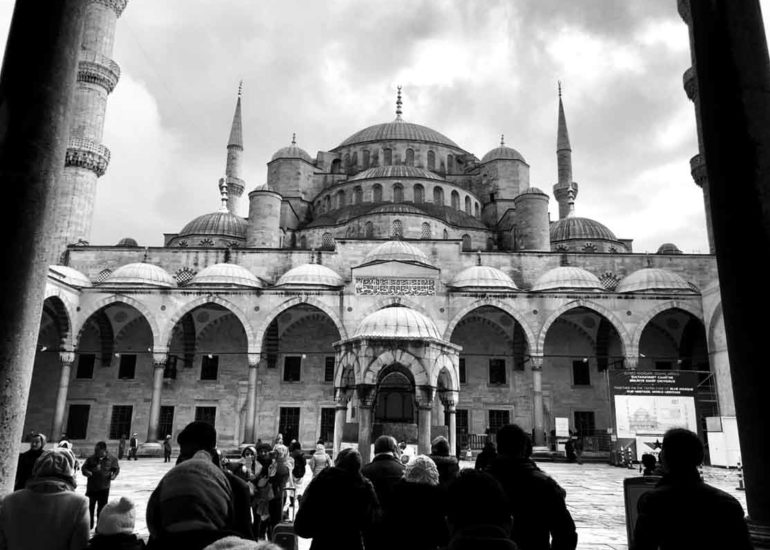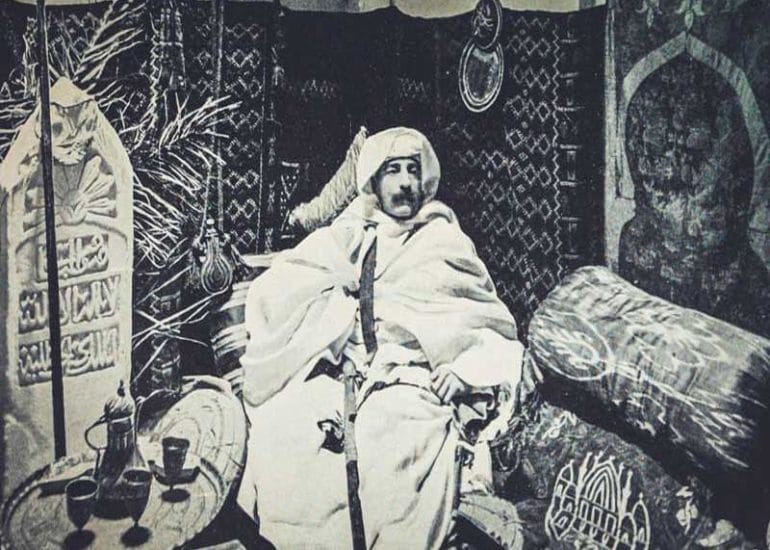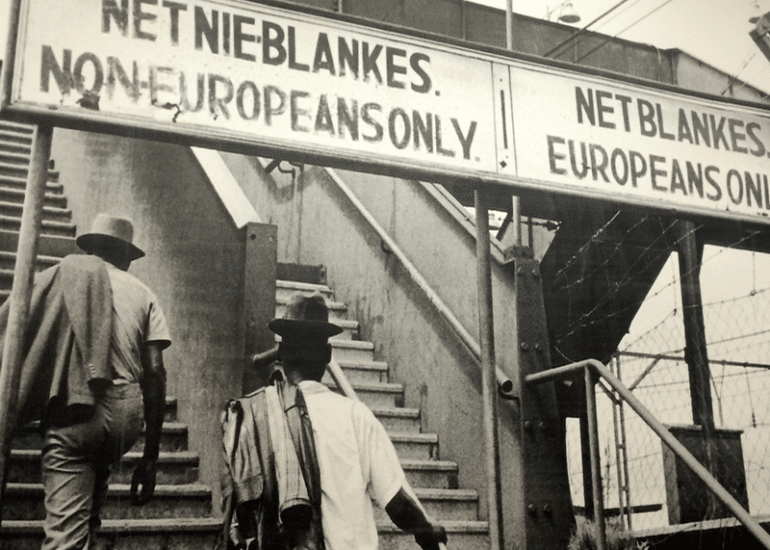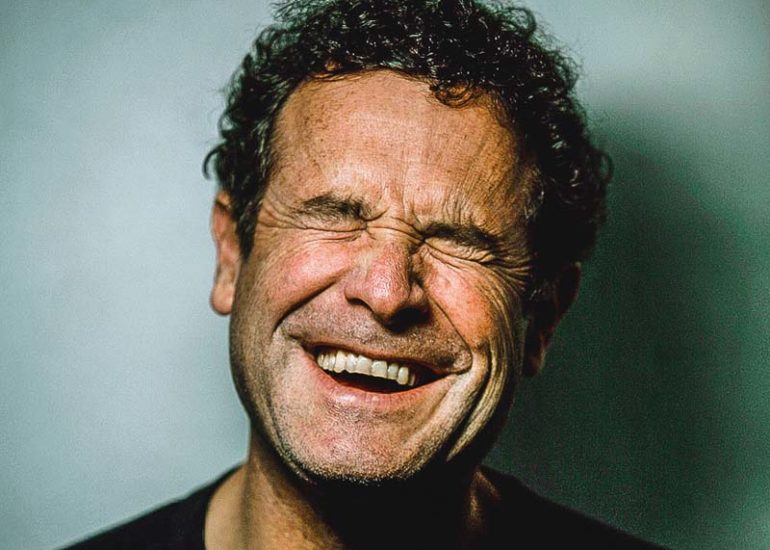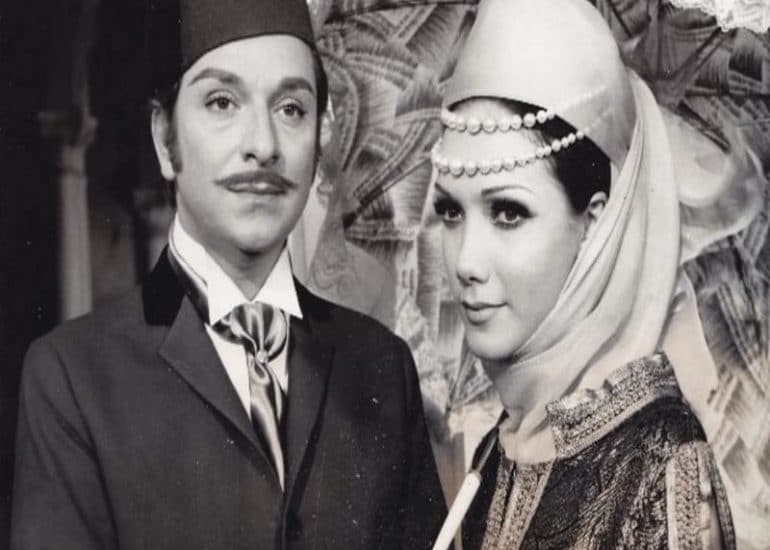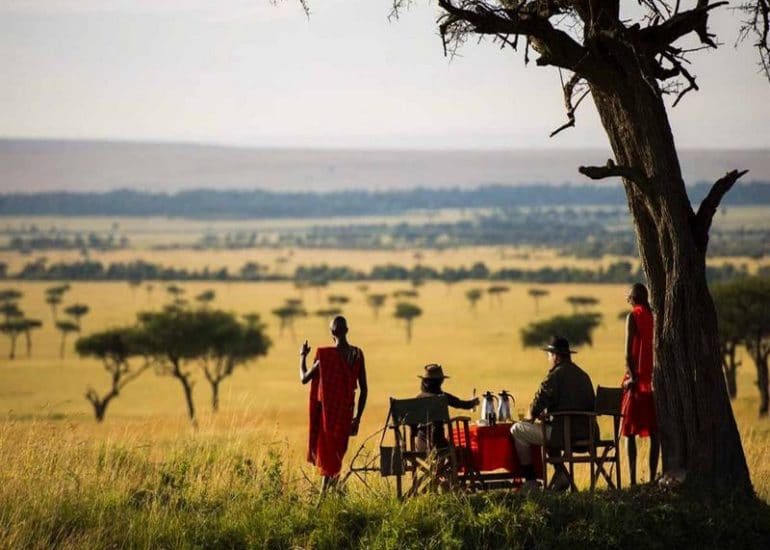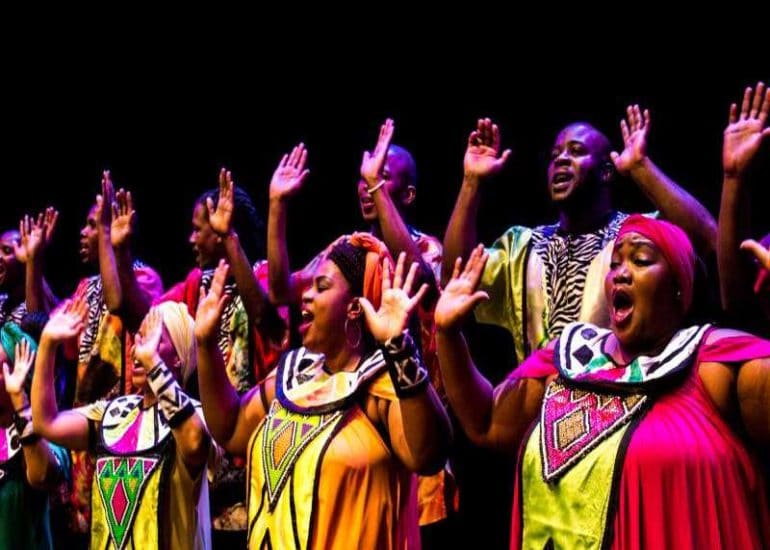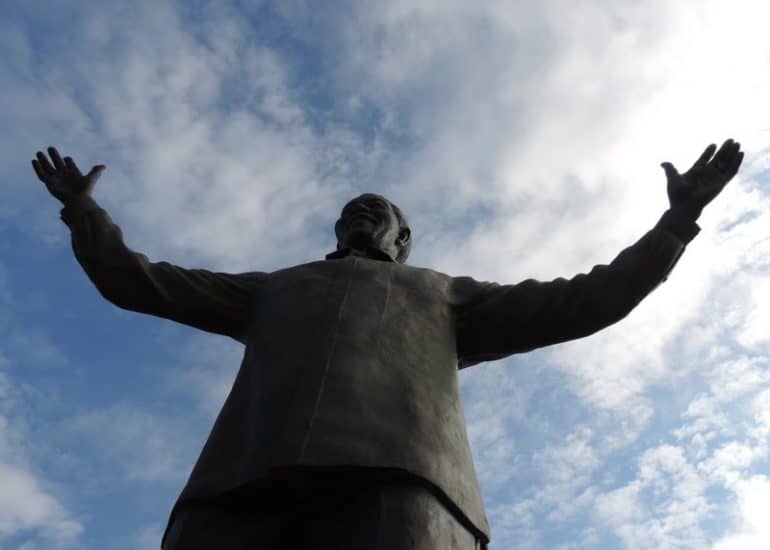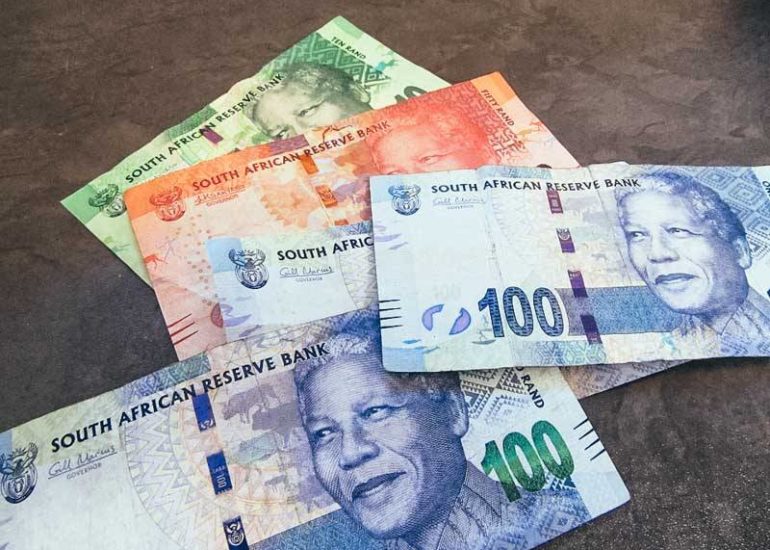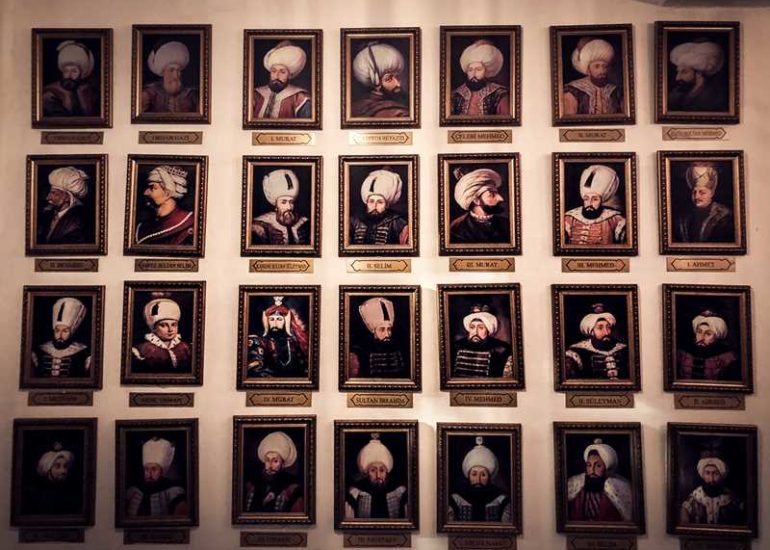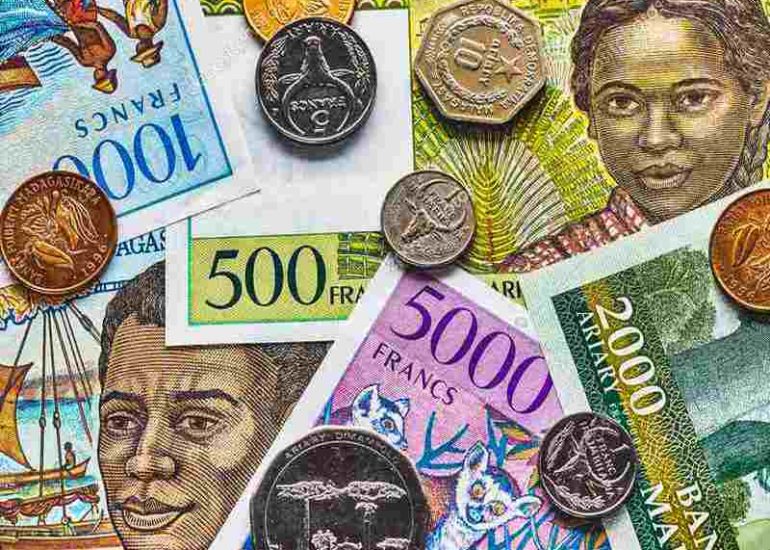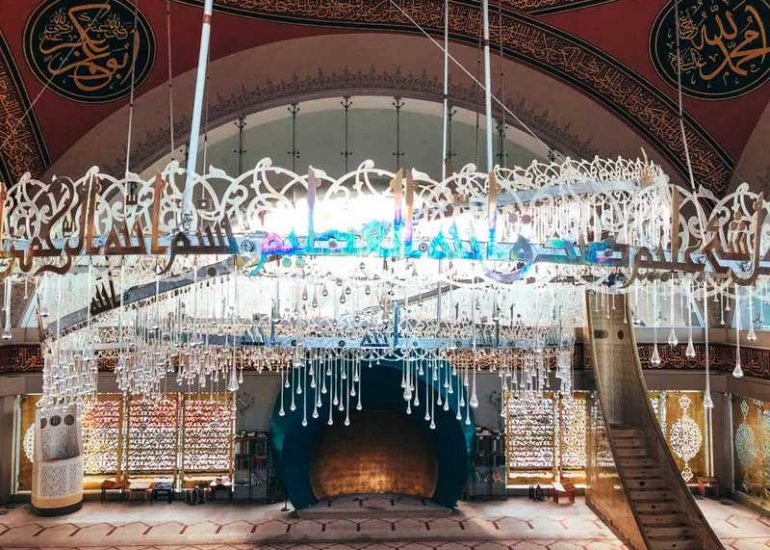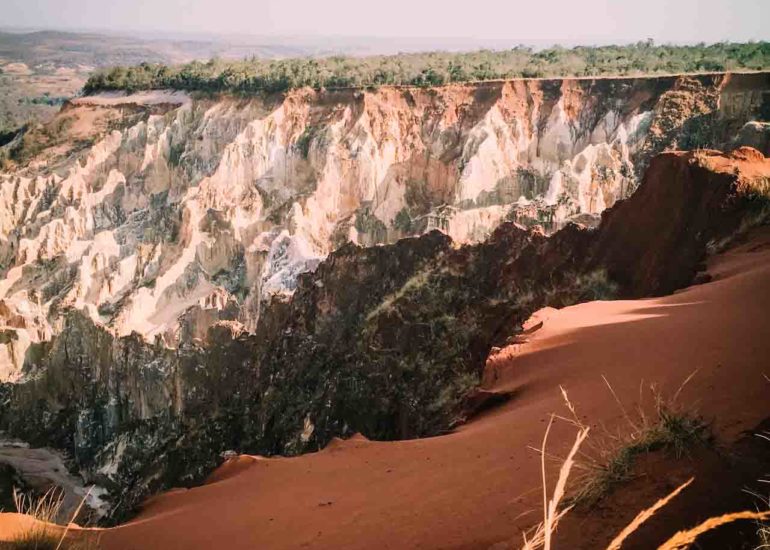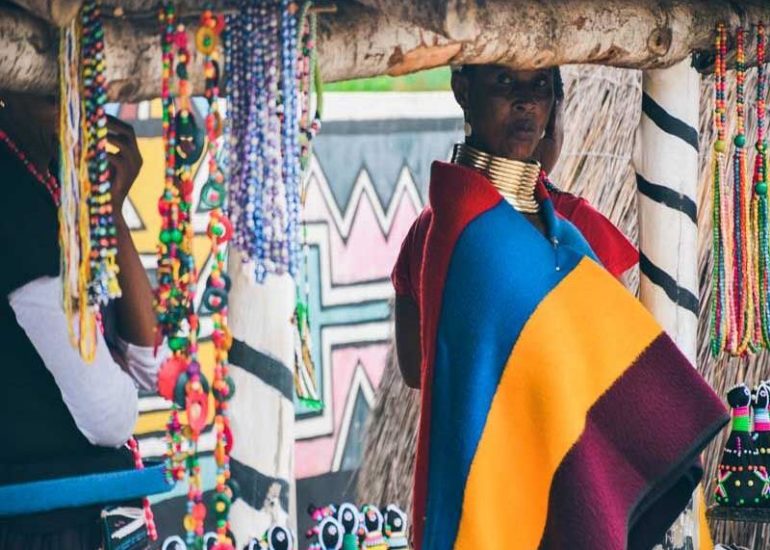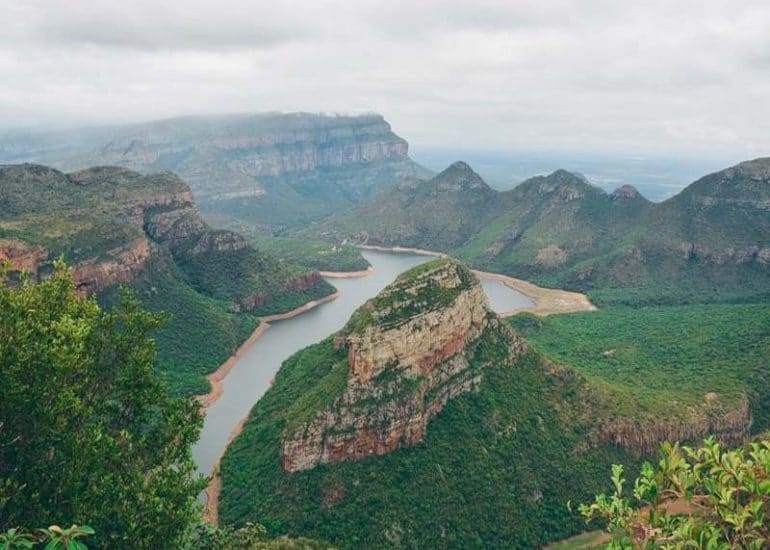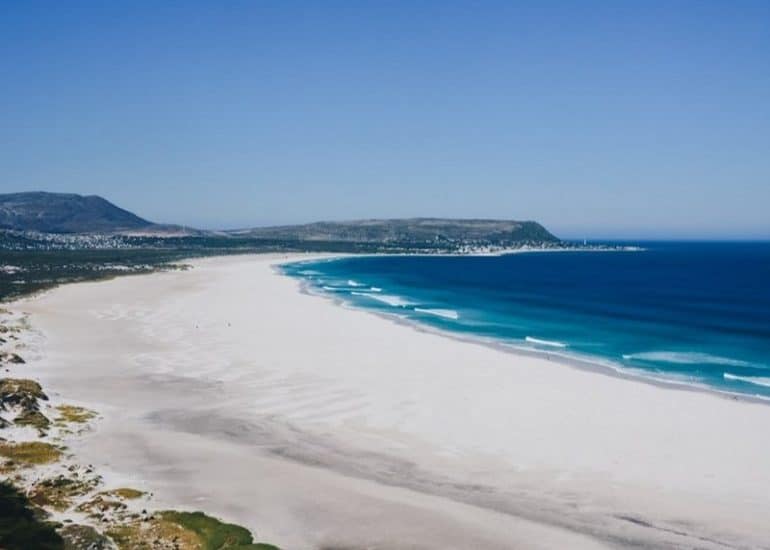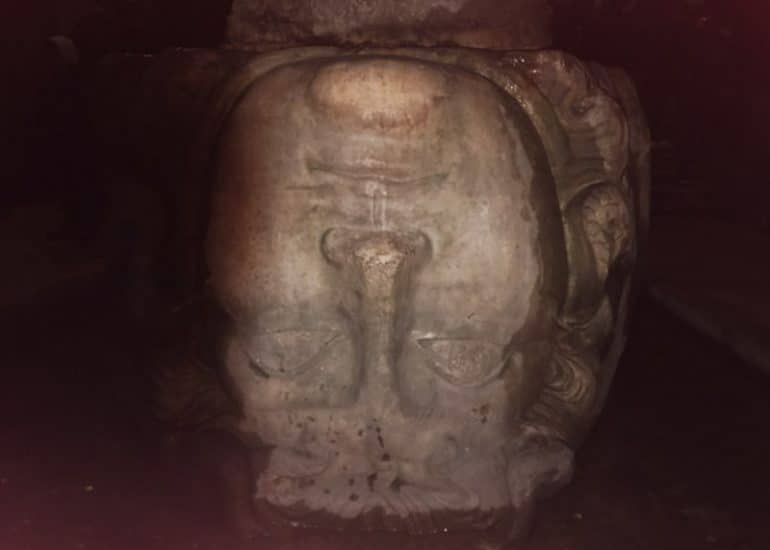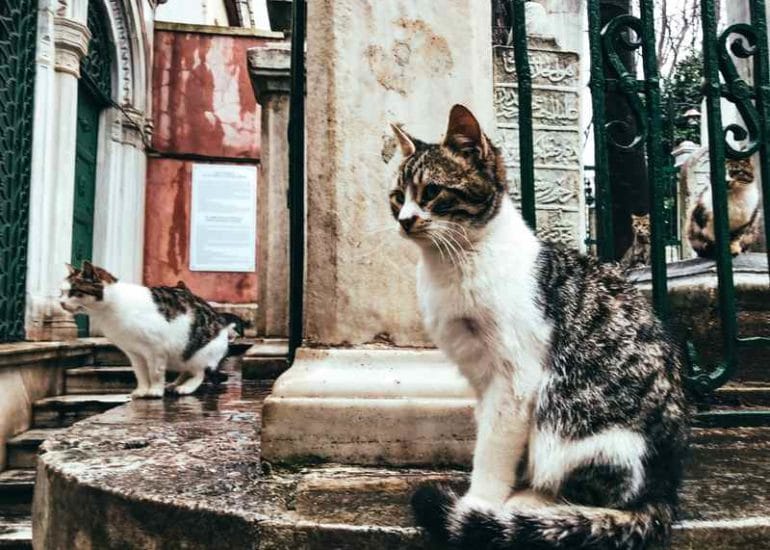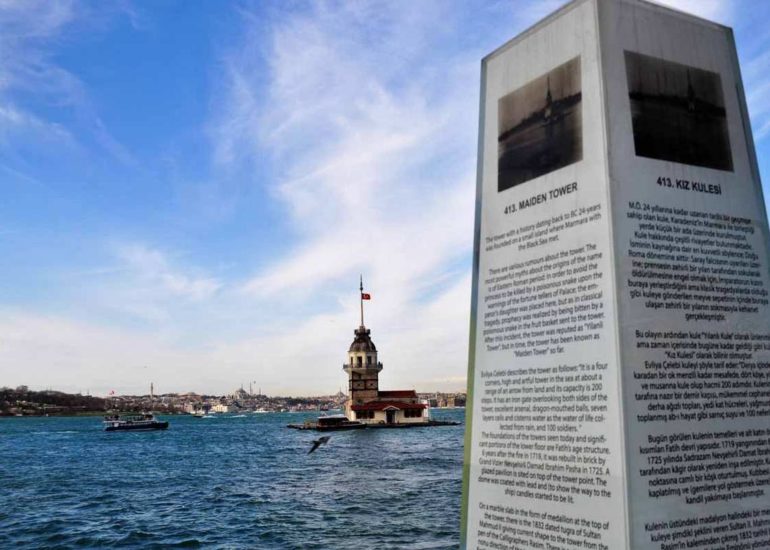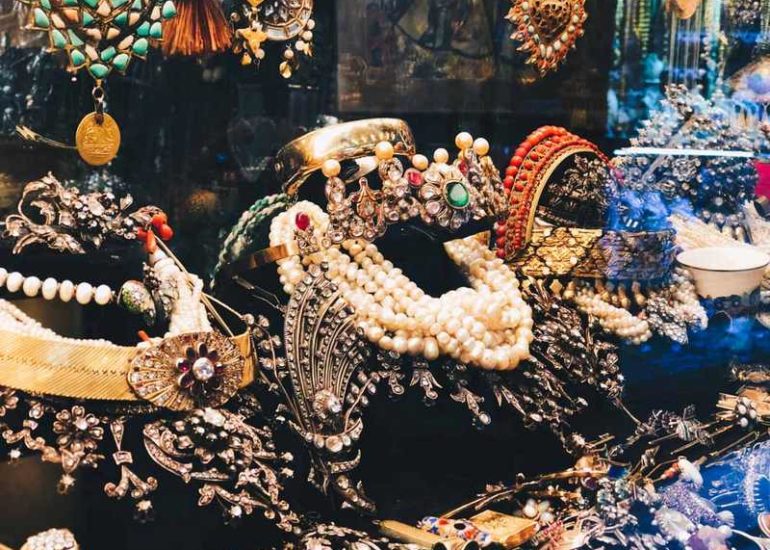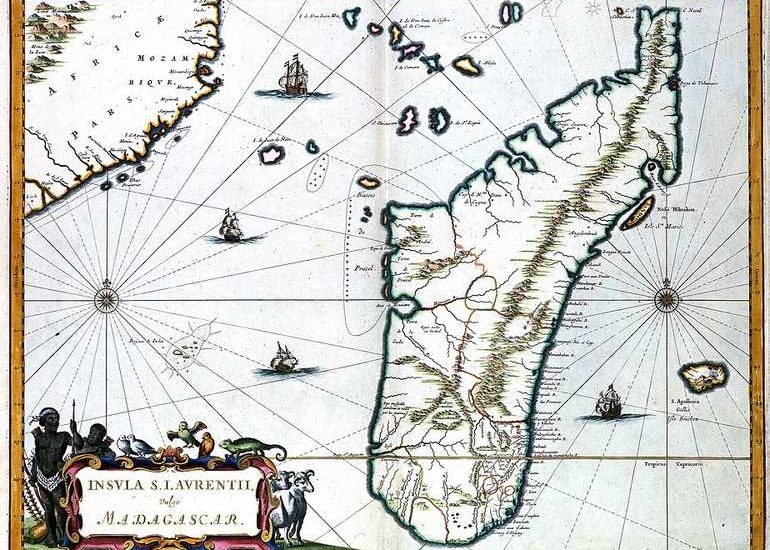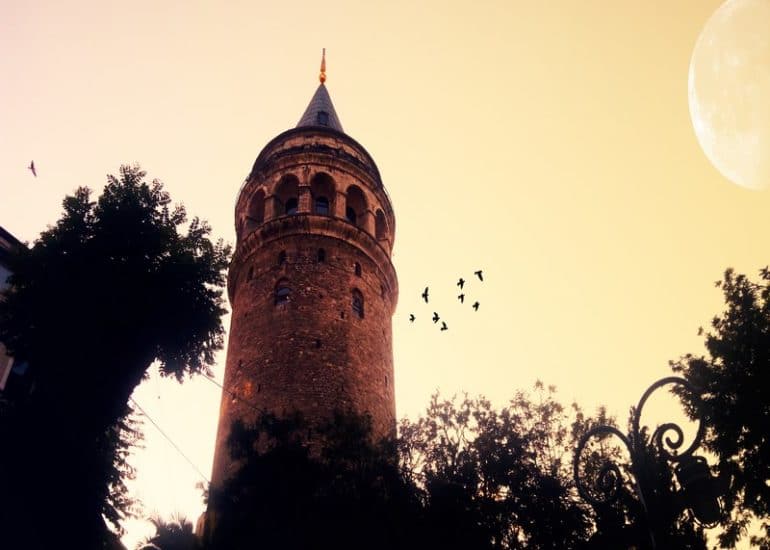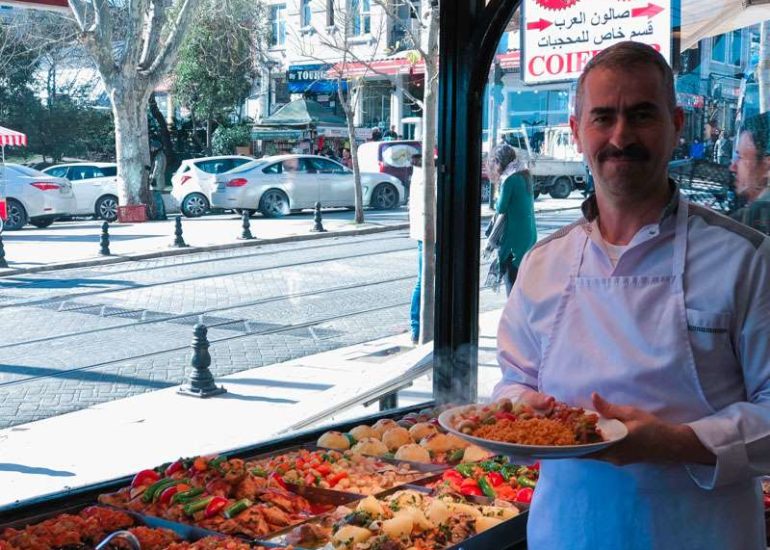Iconic image of the city, the bazaars of Istanbul tell us the multicultural past of ancient Ottoman Constantinople.
Profusion of smells, colors, merchandise spread out in labyrinthine alleys; it's the very effervescence, as in the time of the mythical Silk Road.
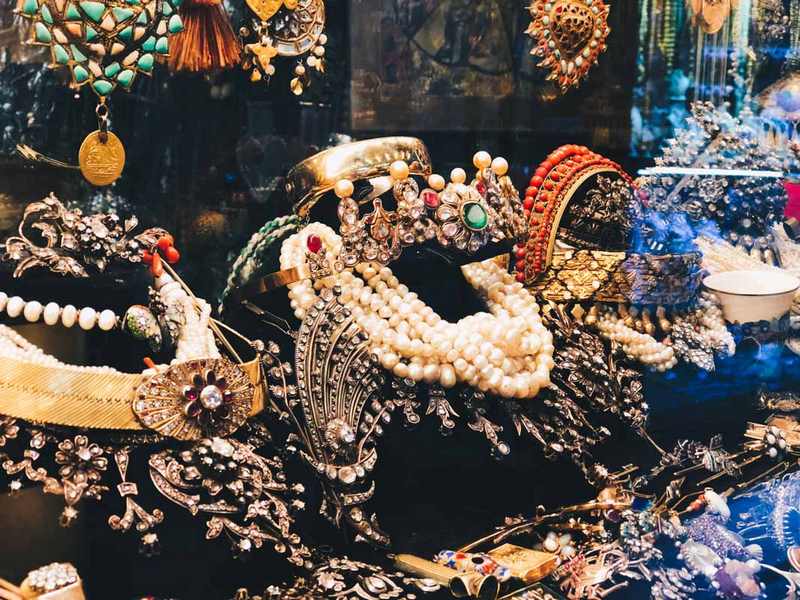
The Grand Bazaar
European Shore, Beyazit district
In the center of Istanbul is the oldest and largest covered market in the world : 200,000 m², 4,000 shops. A city in the city.
One of the busiest places in the world was the last stop on the Silk Road, where the most valuable goods were sold or exchanged.
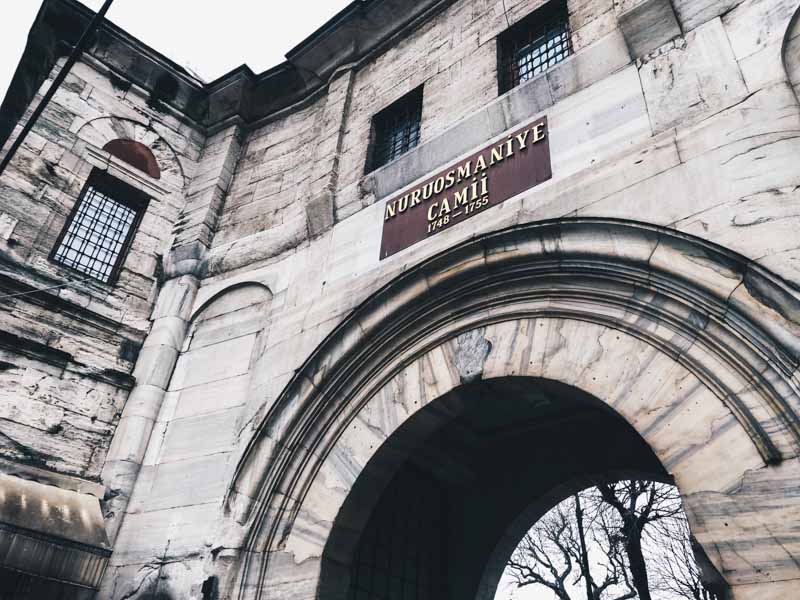
One of the entrance doors of the bazaar, which is named from the nearby mosque.
As the poet Orhan Veli wrote, every street, every alley in the Grand Bazaar as the smell of history.
It owes its construction, in 1455, and its various enlargements to two sultans : Mehmet II the Conqueror and Soliman the magnificent. The city won't definitely have the same face without them.
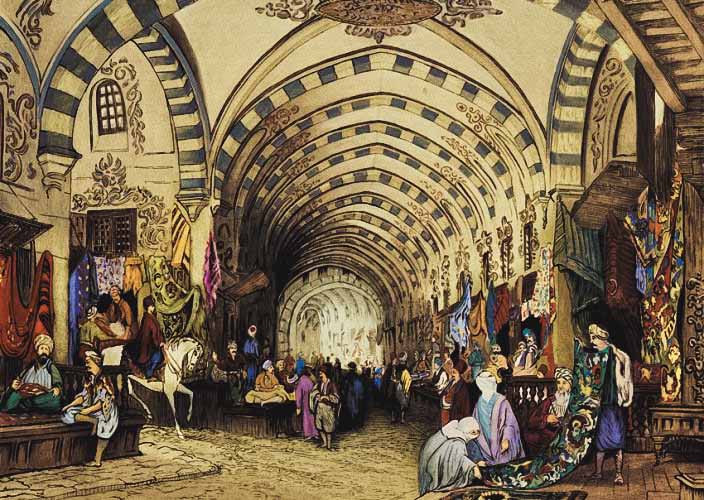
© toutistanbul.com
The oldest part, the old « Bedesten », is today the corner of antique stores (antique weapons, jewelry sets, crockery, silverware, old coins, etc.). This labyrinth of 58 streets is organized in neighborhoods : there you will find mosaics, there leather, jewels, etc. Although in the central aisle the souvenir shops upset a little this organization. A happy mess.

It's a labyrinth solidly built in stone in the Byzantine taste and where one finds a vast shelter against the heat of the day. Huge galleries, one arched, the other built in ogives, with sculpted pillars and colonnades, are each dedicated to a particular kind of goods. One especially admires women’s clothes and slippers, embroidered and laminated fabrics, cashmere, carpets, furniture inlaid with gold, silver and mother-of-pearl, the goldsmiths and even more the shiny weapons gathered in this part of the bazaar called the Bedestain.
Nerval – Jouney to the Orient
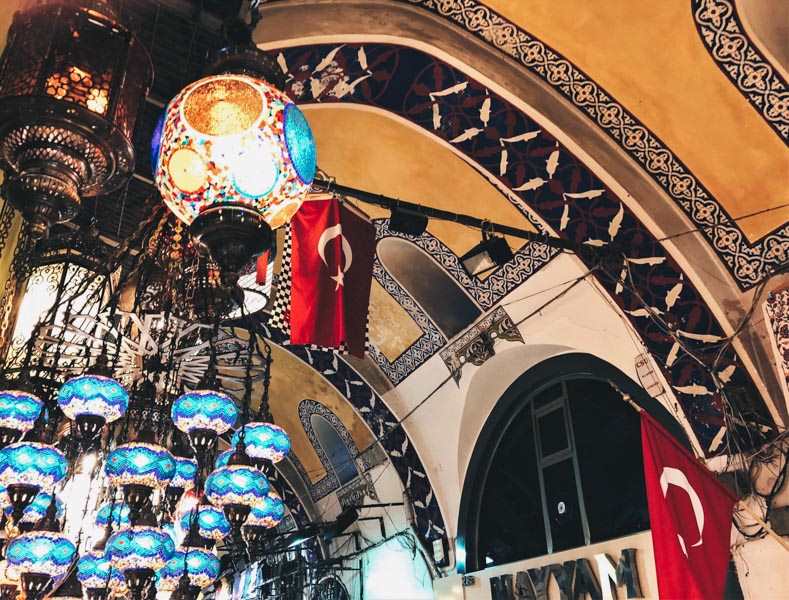
The Bedesten's arcades.
But if the colours of spices, lamps, mosaics and various other small items inevitably attract the eye, it's important not to forget to look up. The architecture of the place, its beautiful arcades of blue, red and green mosaics, remind us that we are not in a vulgar covered hall, but in an old crossroads of goods, managed by an empire that dominated much of the Middle East and North Africa for six centuries.
The caravanserai and han
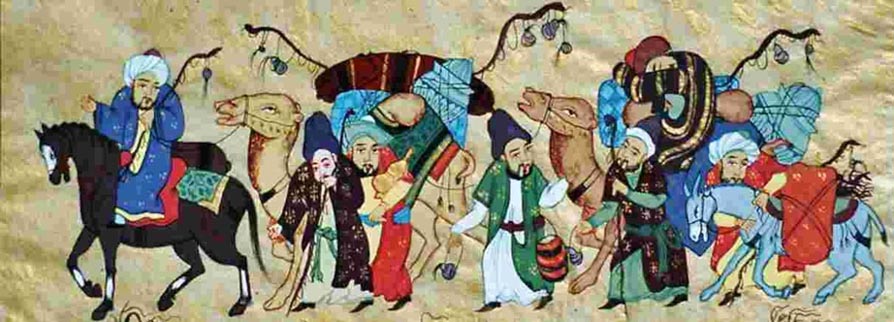
During the Silk Road's period, the goods of the Grand Bazaar were transported by caravans, who stopped in spaces where they could store their products (in the han), eat and sleep safely for up to 3 days, free of charge. Other travelers and pilgrims could also make a relaxing stop.
This commercial traveler hotel was made up of caravanserai.

An example of a caravanserai in the middle of the desert. Just replace the truck with camels.
The Grand Bazaar includes 16 of them, the oldest and most important of which is the « Old bazar », located in the center of all the corridors.
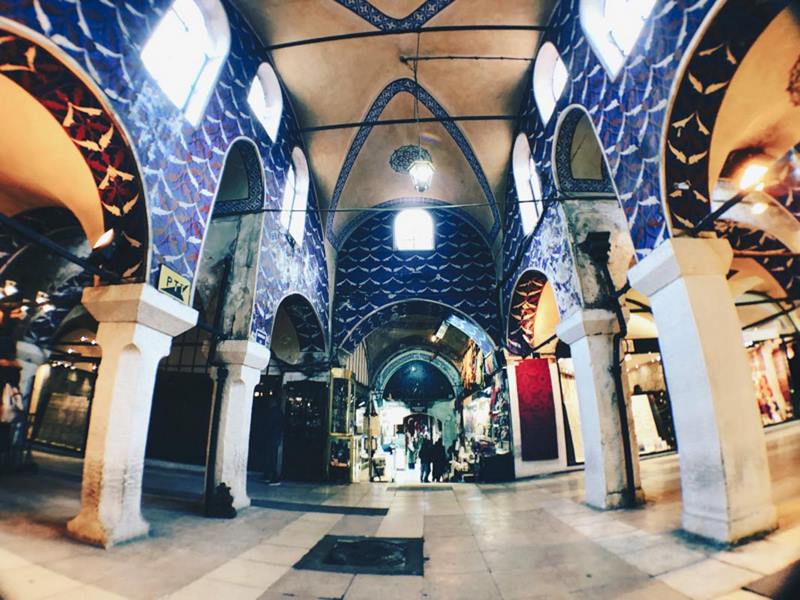
The others are around the bazaar.
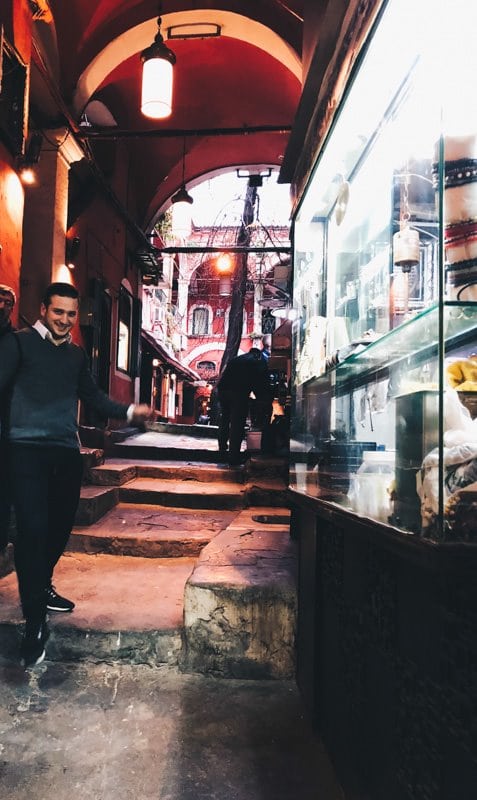
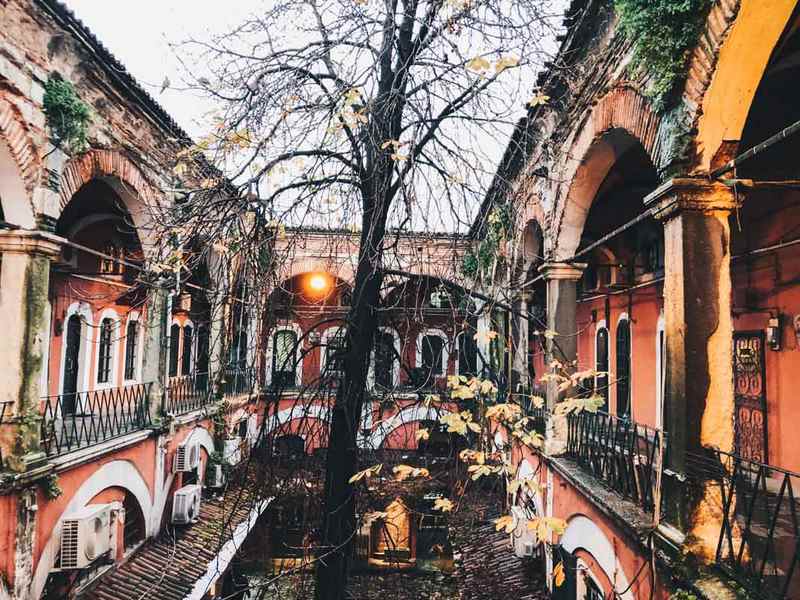
The valid han Buyuk, the (almost) secret roof of the city, is a landmark of Instagrammers.
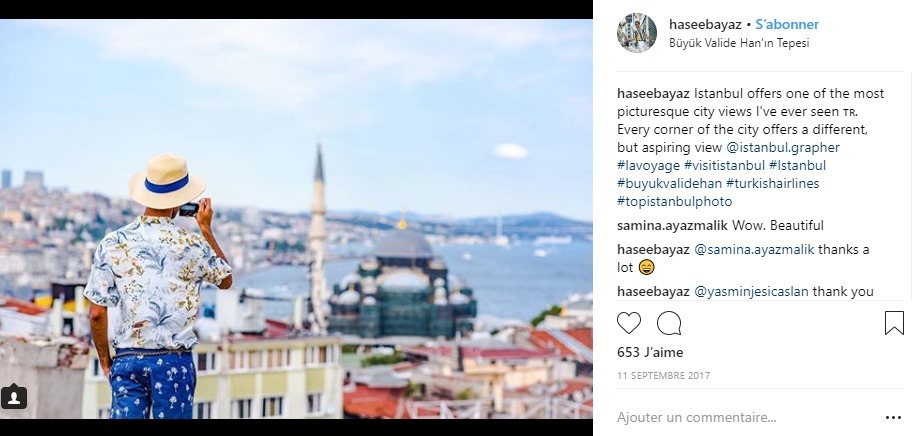
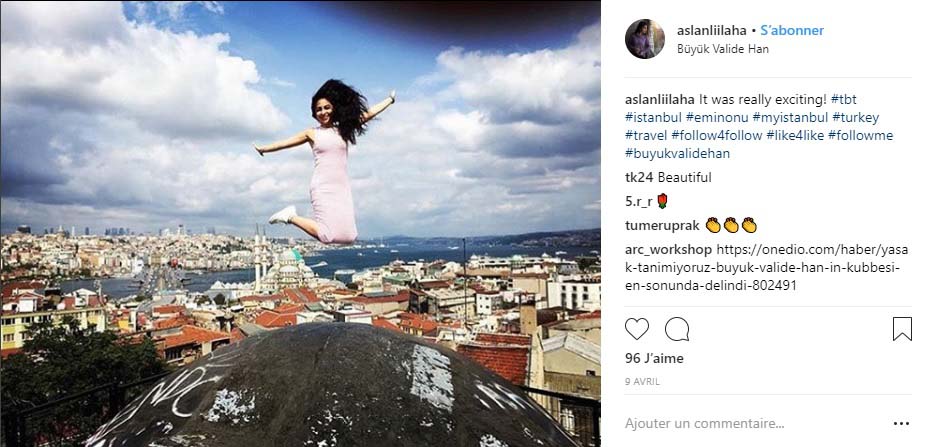
View of the Blue Mosque, Galata Tower and the Bosphorus.
Quite difficult to find, there is a sign but partially erased. Don't hesitate to ask your way. When arriving, go up the stairs to your left, then straight, then right to an old locked door. A smart guy will be there to unlock the door against a few lira, unless you arrive too early (give him time to drink his coffee and eat his simit anyway !).
#büyükvalidehan
What you can find
What to drink (tea), to eat (Turkish delights), clothes (if you like leather, or ottoman costumes lol), perfume (rather heady, or then reproductions of Brand perfumes which I wouldn't bet on the durability), handmade plates, tea and coffee services (very refined), statues, lamps (very charming and inexpensive for small bedside models), spices, souvenirs of all kind, lots of gold jewelry (22 billion euro in gold circulates there per year), and of course the Nazar boncuk, the blue eye of Turkey.
In short, this is a mess.
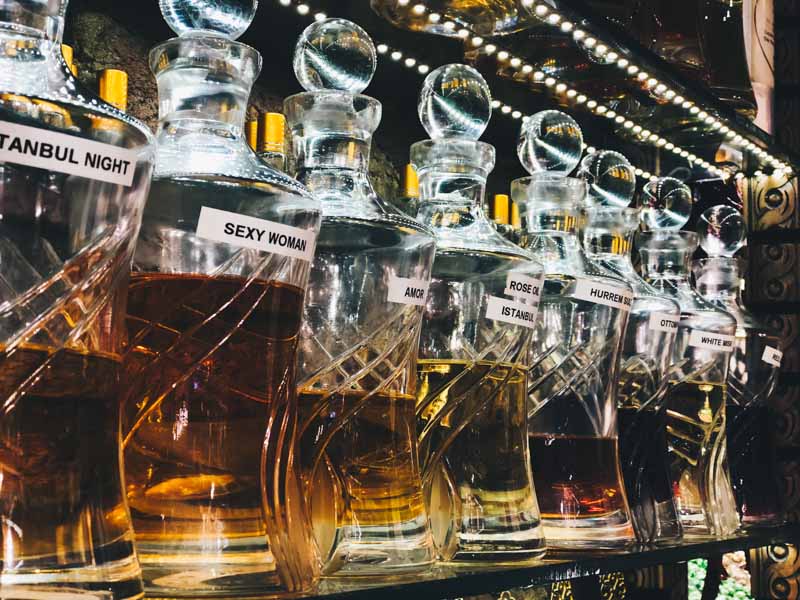
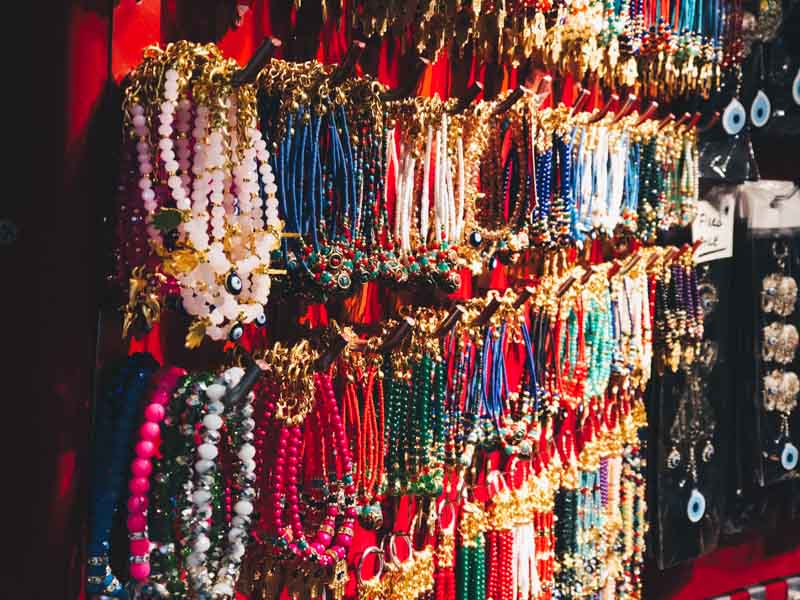
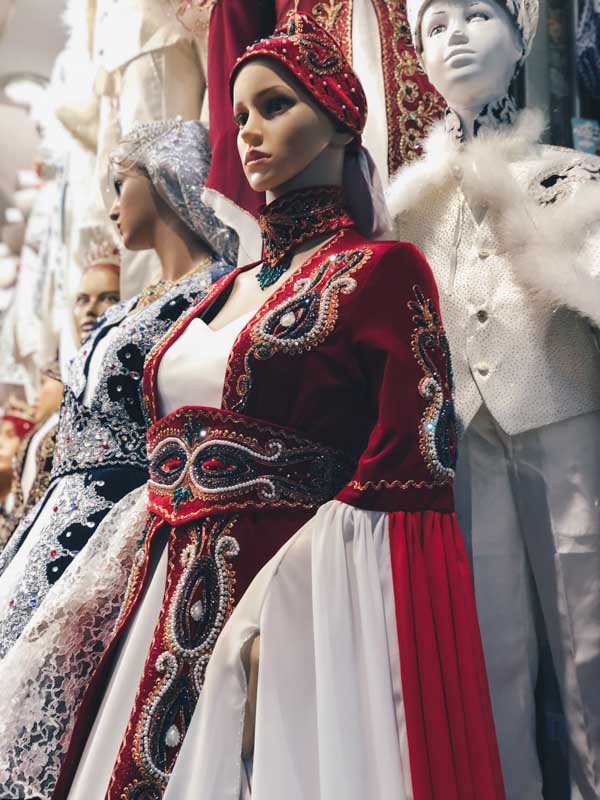
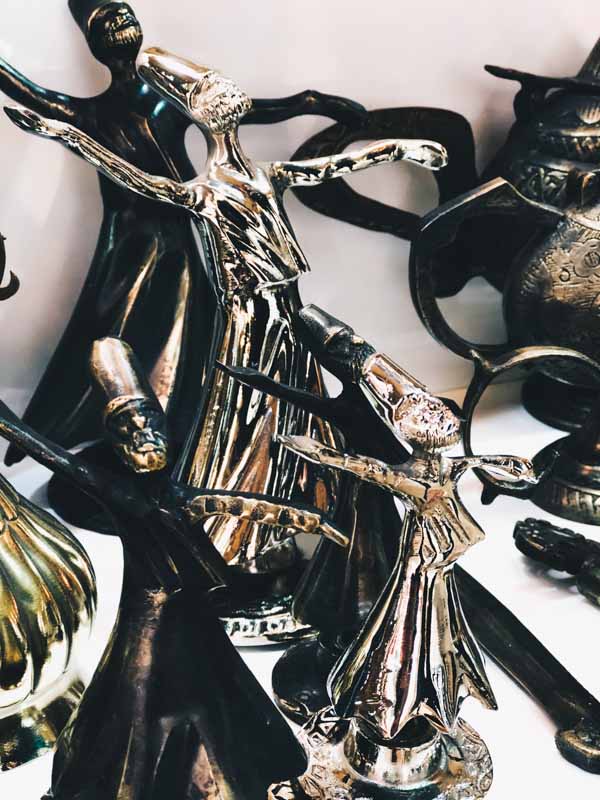
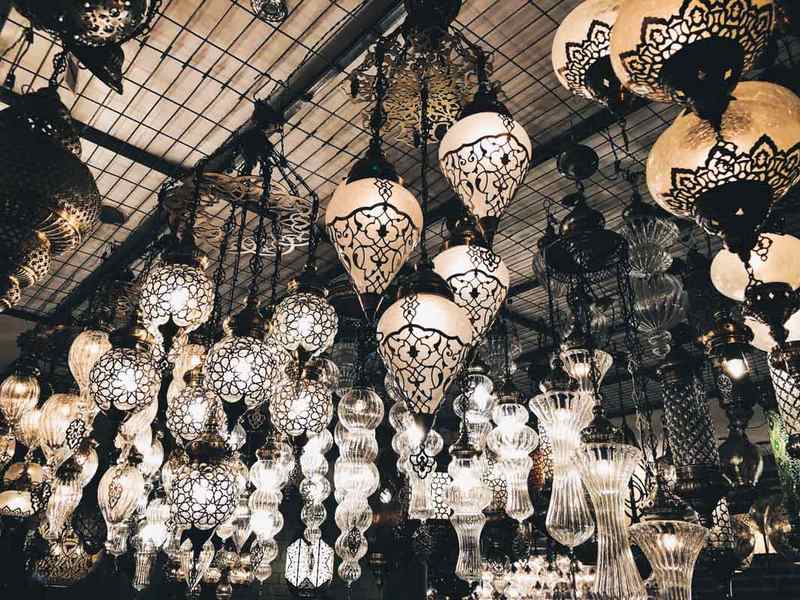

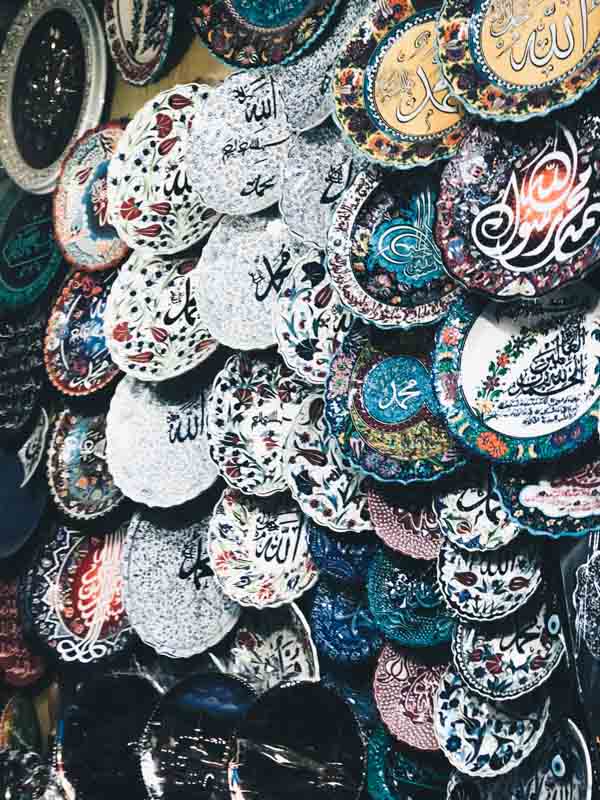
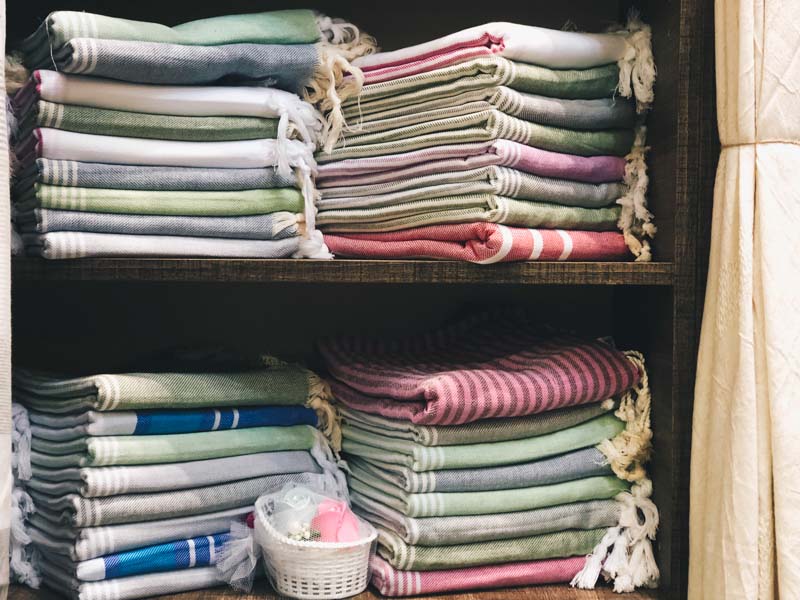
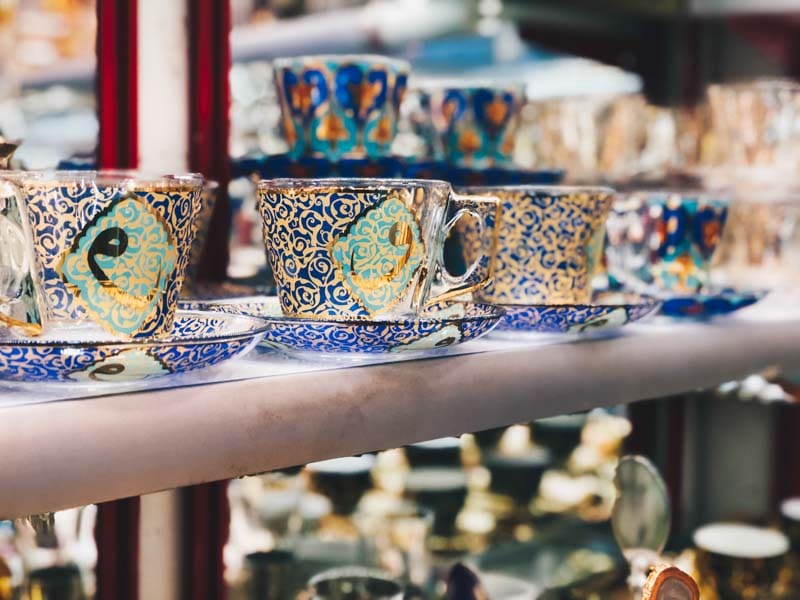
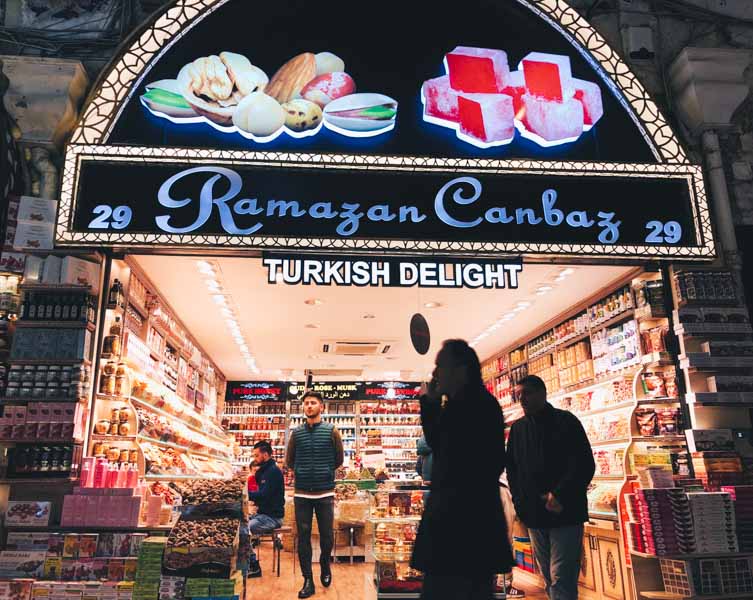
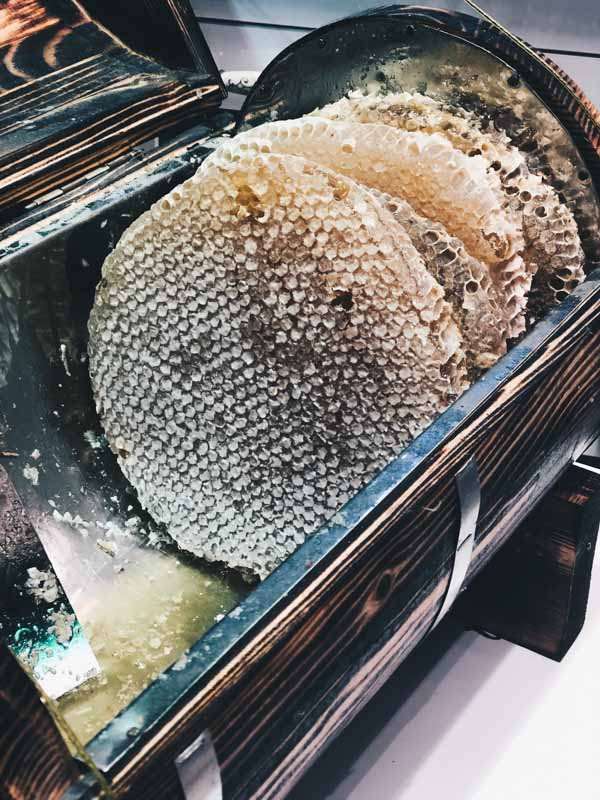
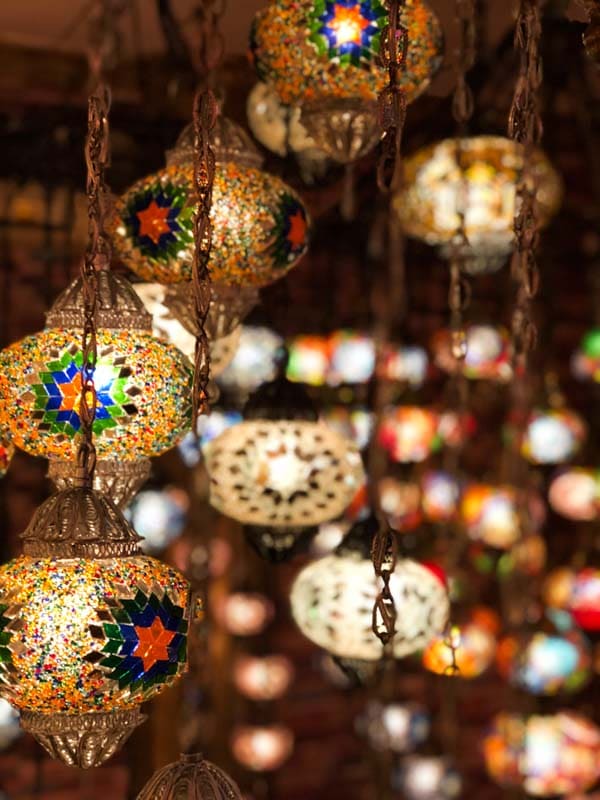
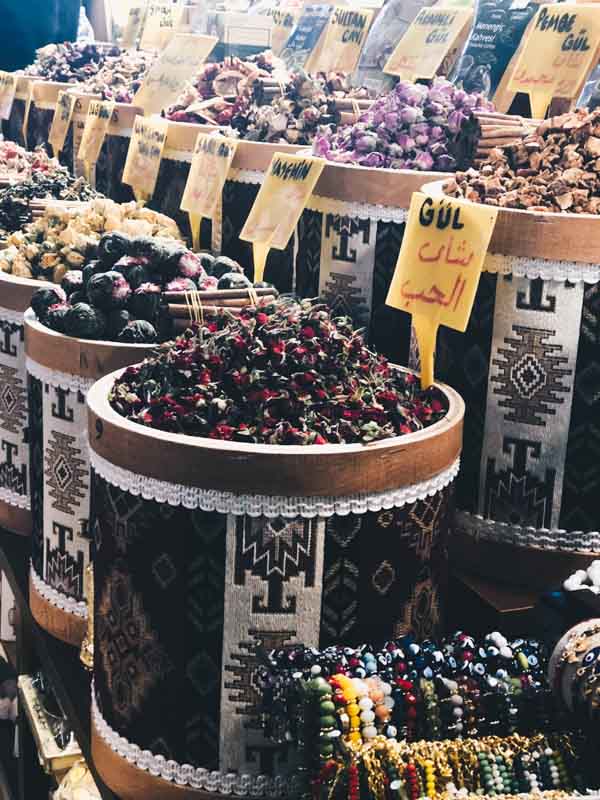
The Nazar boncuk, literally “ amulet against the evil eye ”, is widespread in Turkey. Supposed to protect against evil, it comes everywhere in pendant, bracelet, or key ring. The genuine ones are made of glass paste and made by gypsies in Turkey.
« The blue eye » is a vestige of antiquity, when the Tentrist religion (not to be confused with «tantric» lol) reigned among the Turkish and Mongol populations. Slightly superstitious.
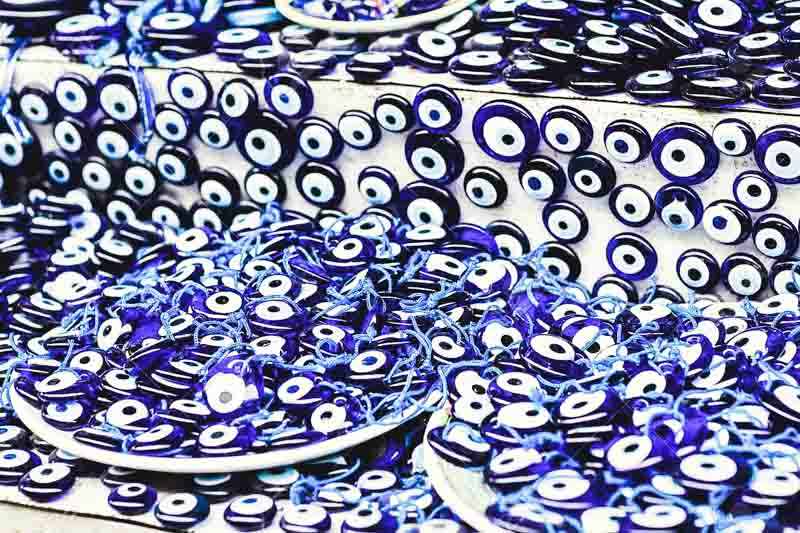
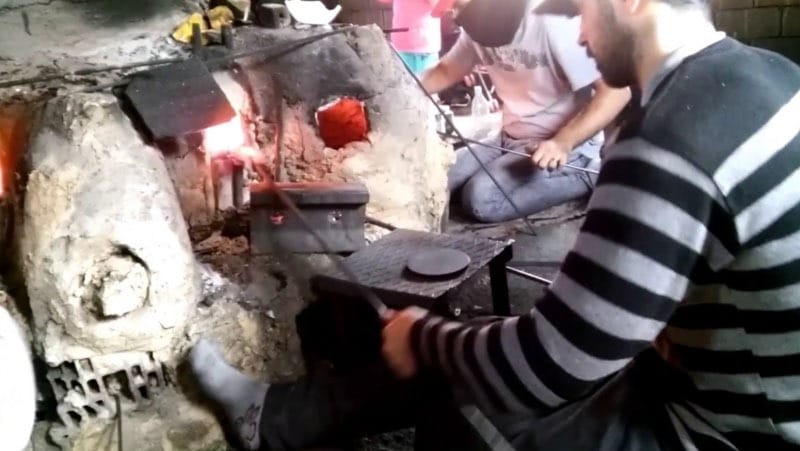
Lithographs are nice souvenirs to bring back. Designed by local artists, their price depends on the size, finesse of the details and gilding. However, negotiate and compare. The hardest thing will be to choose from the different shops.
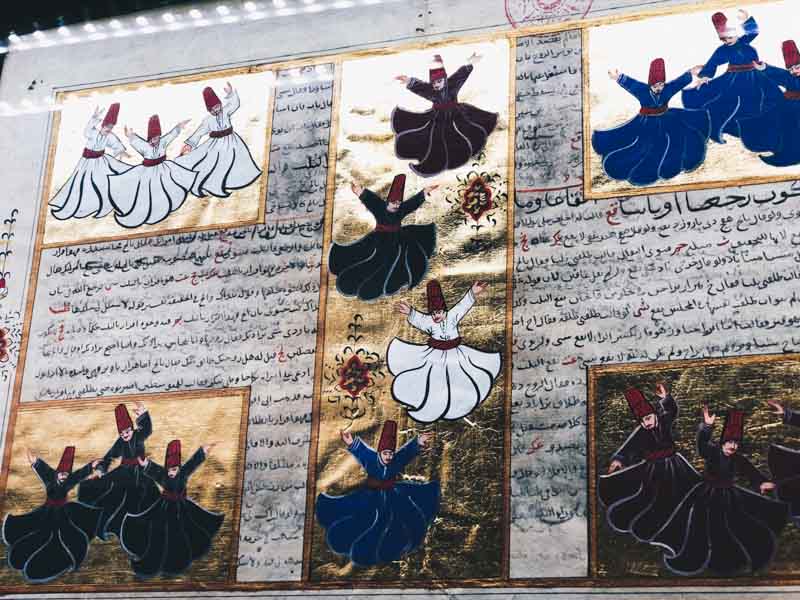
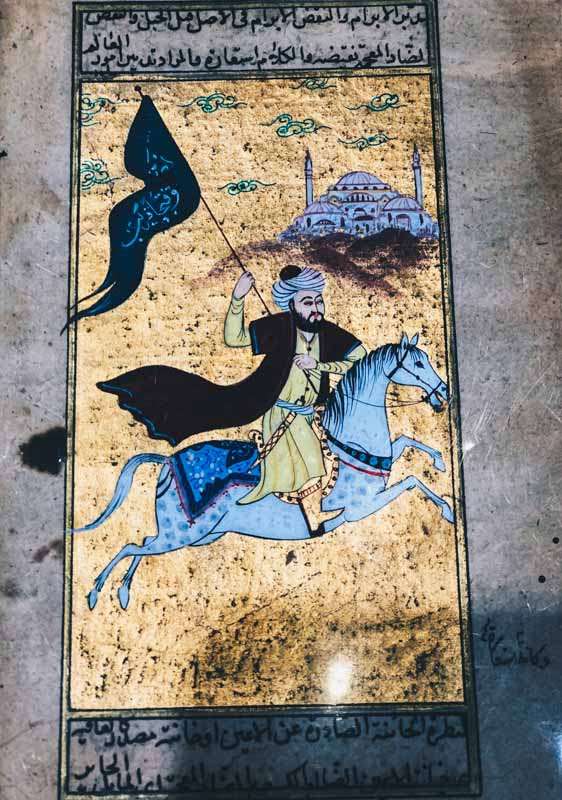
The rugs
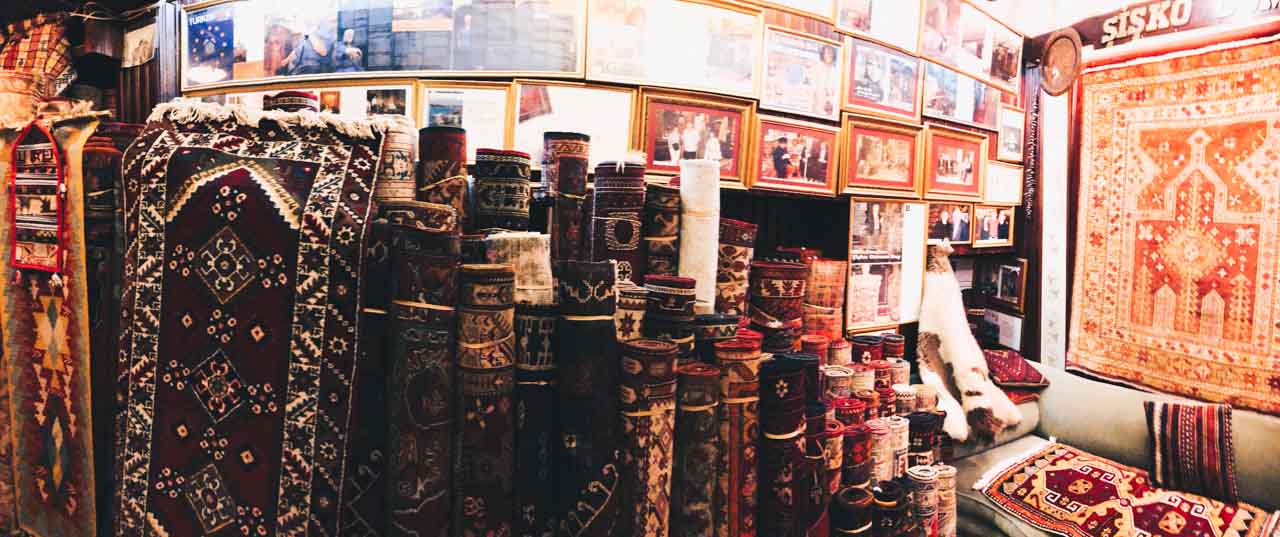
A weekend in Istanbul is the perfect opportunity to bring back a rug. There are different ones : of prayer, kilim (woven with flat stitches), or Hereke (made of silk, those of the palaces of the Empire) or more common. A beautiful kilim rug like this one costs 400€ :
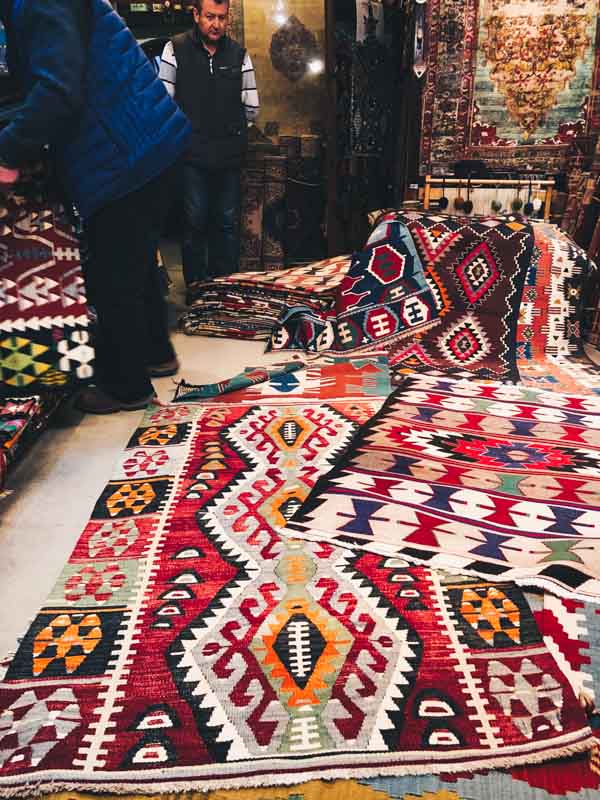

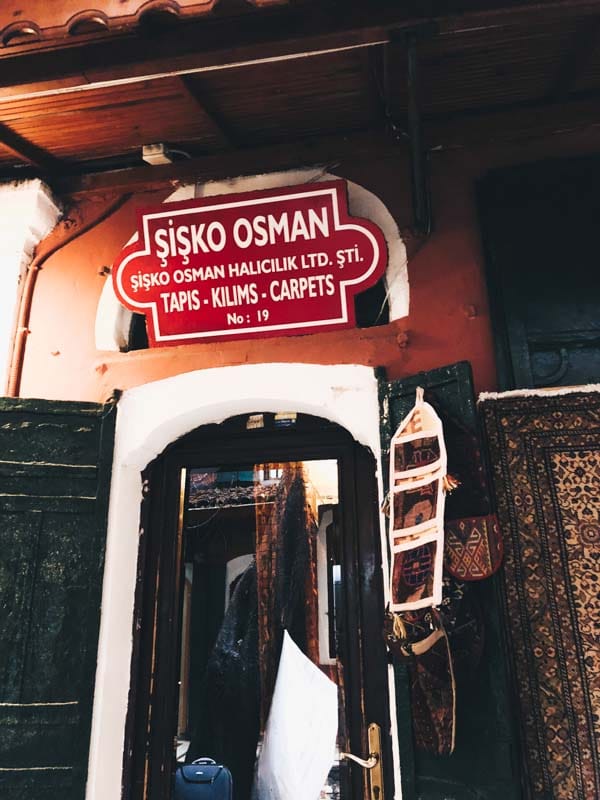
You have to get lost in the hustle and bustle of the bazaar, joke with the sellers, negotiate, and be fooled at least once, otherwise the holidays aren’t really one of them! lol
Bargaining
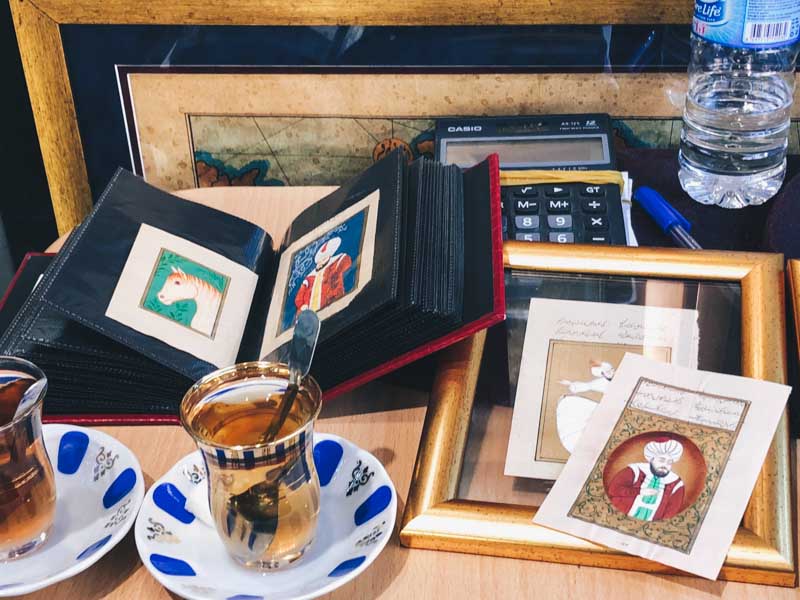
It’s not a scoop, the Grand Bazaar can be a tourist catch. For example, a salesman tried to extort me 77 euros for a tiny bottle of perfume. I advise you to make a quick first turn to discover the place, gauge the goods and take pictures, then come back one or two days before the end of your stay, with more time. You'll then have a better idea of what you want, the prices practiced elsewhere, and the place that remains in your suitcase.
It's not the souk of Marrakech in the middle of Ramadan : if you will be much solicited, no one will attack you and the negotiations will be carried out with a smile. No secret : don't show too much interest, pretend to leave. In most cases the seller will call you back.
Especially don't neglect the surrounding streets, you'll often find the same products, cheaper, and sometimes more authentic.
The Grand Bazaar suffered, nothing was spared : fires, earthquakes, the most terrible was the one in 1894. That year, the earth trembled 12 times in 45 days, causing all the minarets of the city to collapse, up to the facades of Saint Sophia.
Today its structure is again threatened, deteriorated by the weight of the years. The already badly damaged roof took a small hit when filming Skyfall, when James Bond embarked on a motorcycle chase on his rooftops.
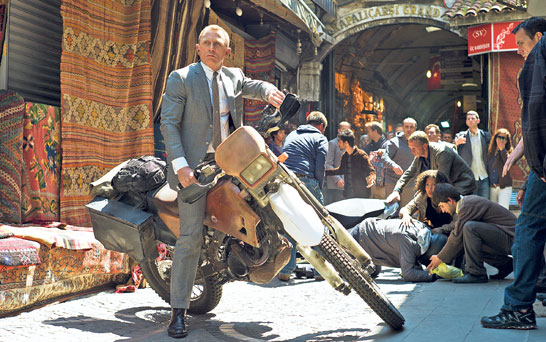
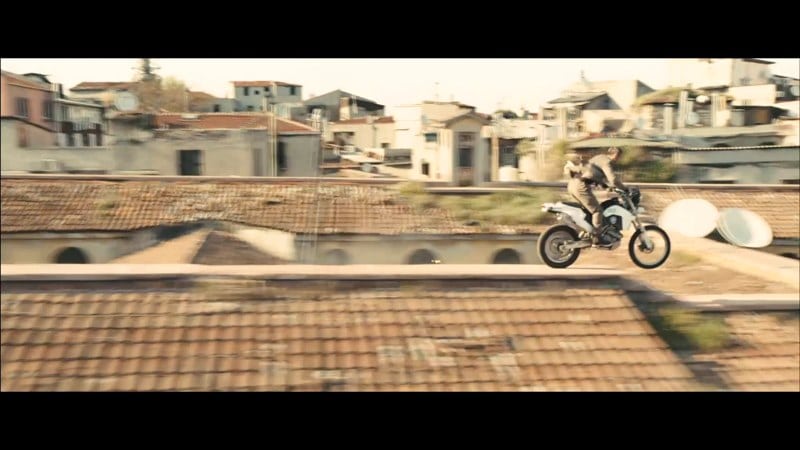
Best time to go. Open from 9am to 7pm from Monday to Saturday. Avoid Saturday crowds if possible.
#kapalıçarşı
The egyptian bazaar
European shore, Eminönü district
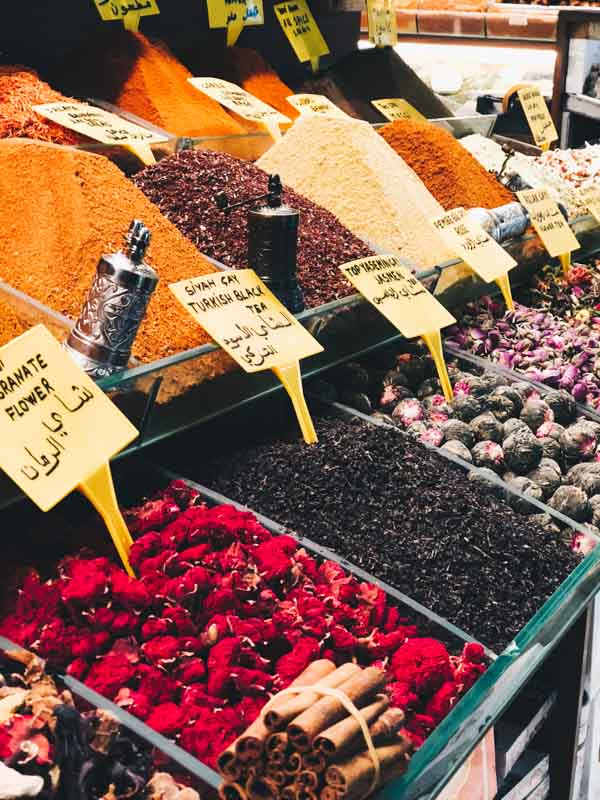

Located between the Rustem Pasha Mosque and the New Mosque (Yeni camii), this bazaar was built thanks to Egyptian taxes, as Egypt was then part of the empire. If spices and medicinal plants were sold there at the time, you will find today more or less the same as in the Grand Bazar, but with many more local specialties (cheese, pastries, jams).
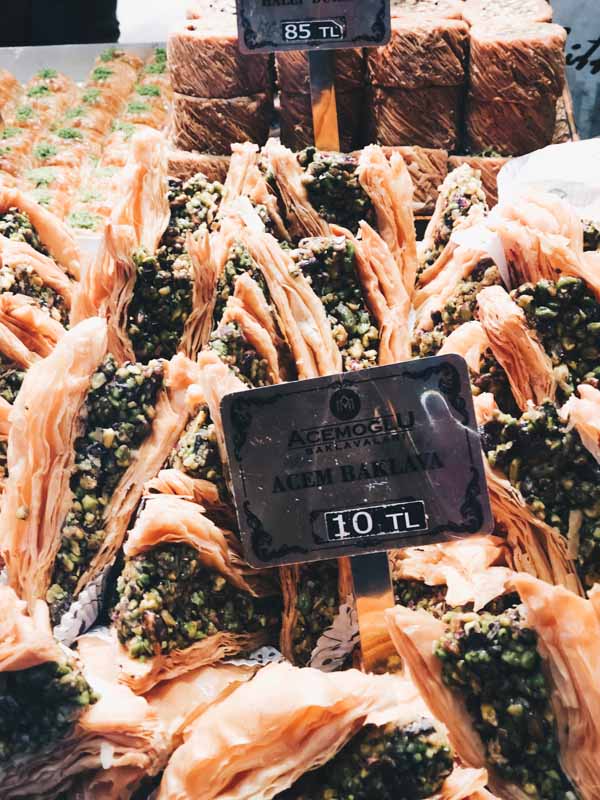
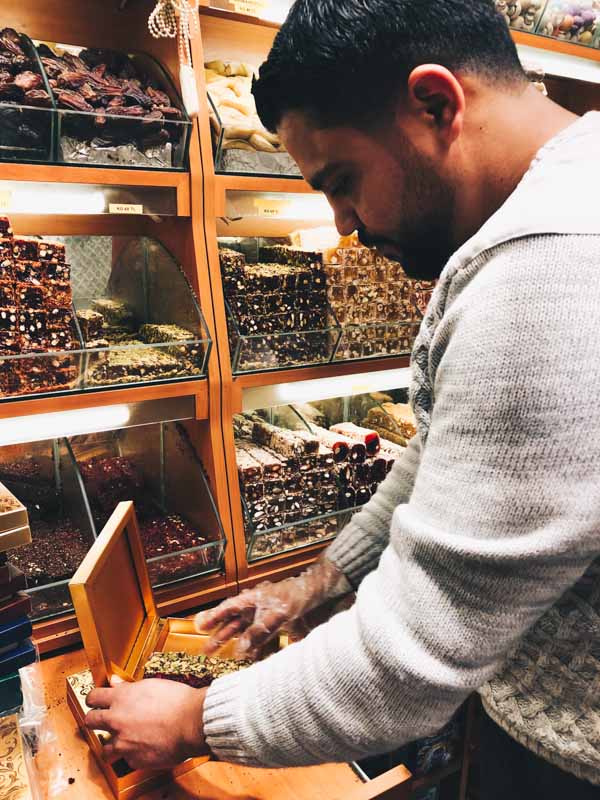
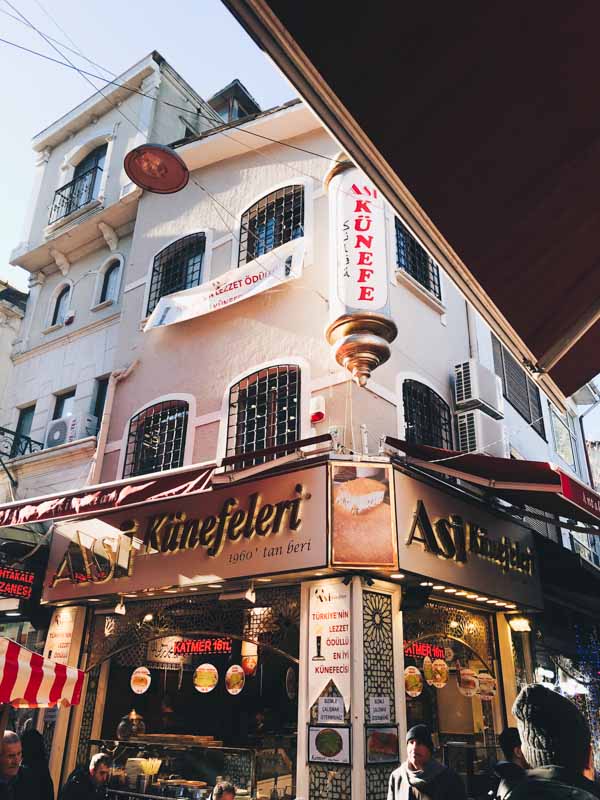
One of the sambouliotes favorite cafes is the Kurukahveci Mehmet Efendi Turkish Coffee, in front of which they don't hesitate to line up.
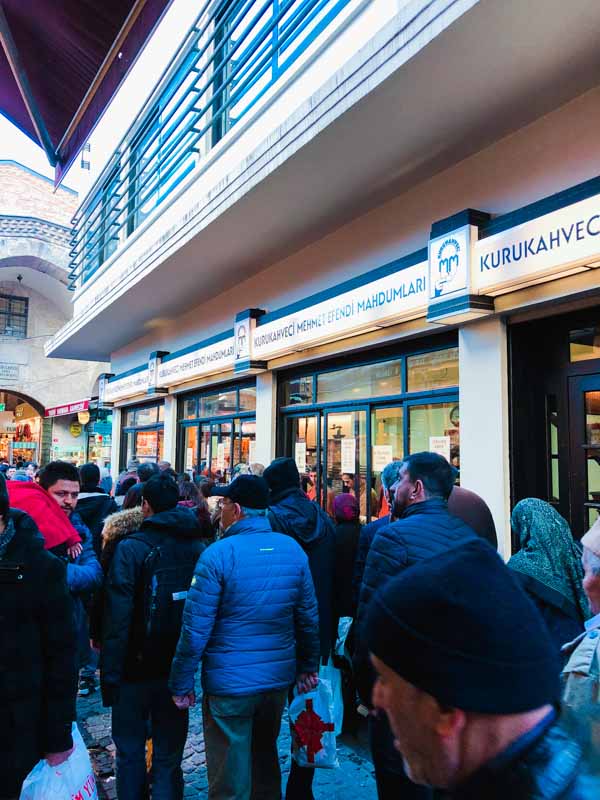
Kurukahveci Mehmet Efendi Turkish Coffee, a roasting company founded in 1871.
Best time to go. Open every day from 9:30am to 7pm. Get lost in the streets around the bazaar and eat there, for example after your visit to the Rustem Pasha Mosque.
